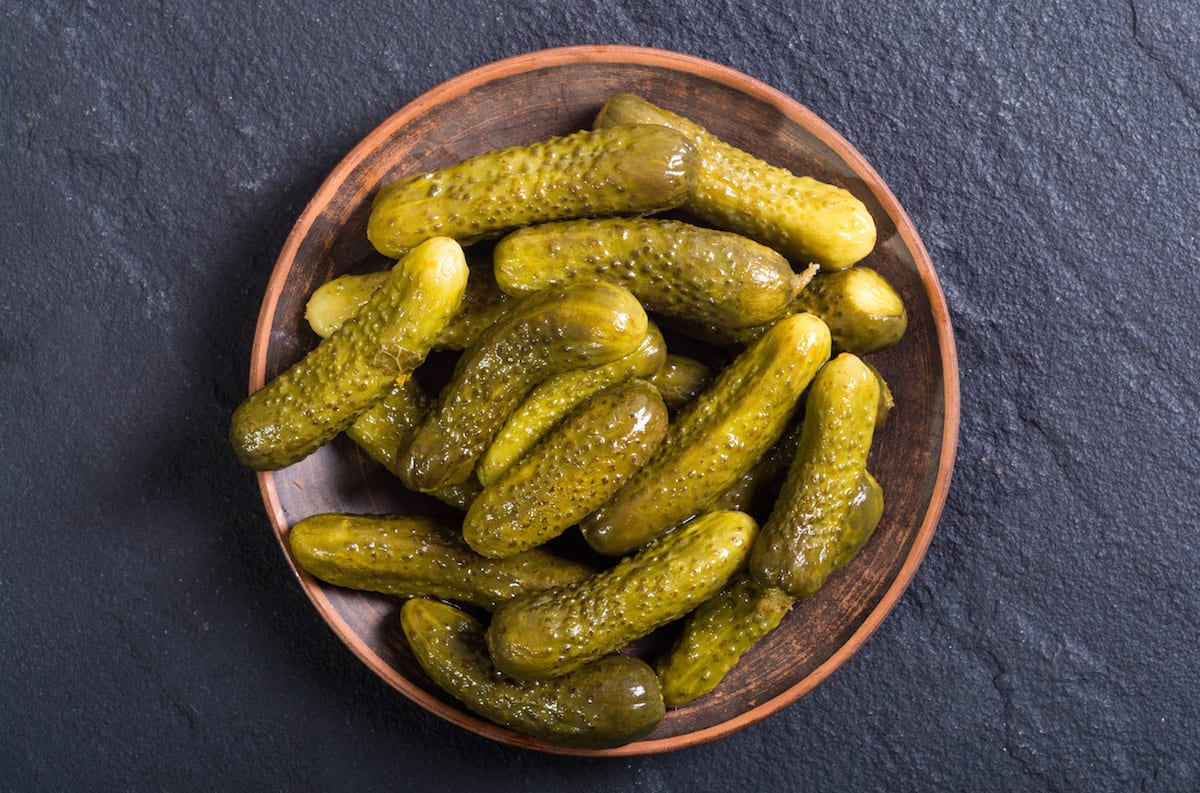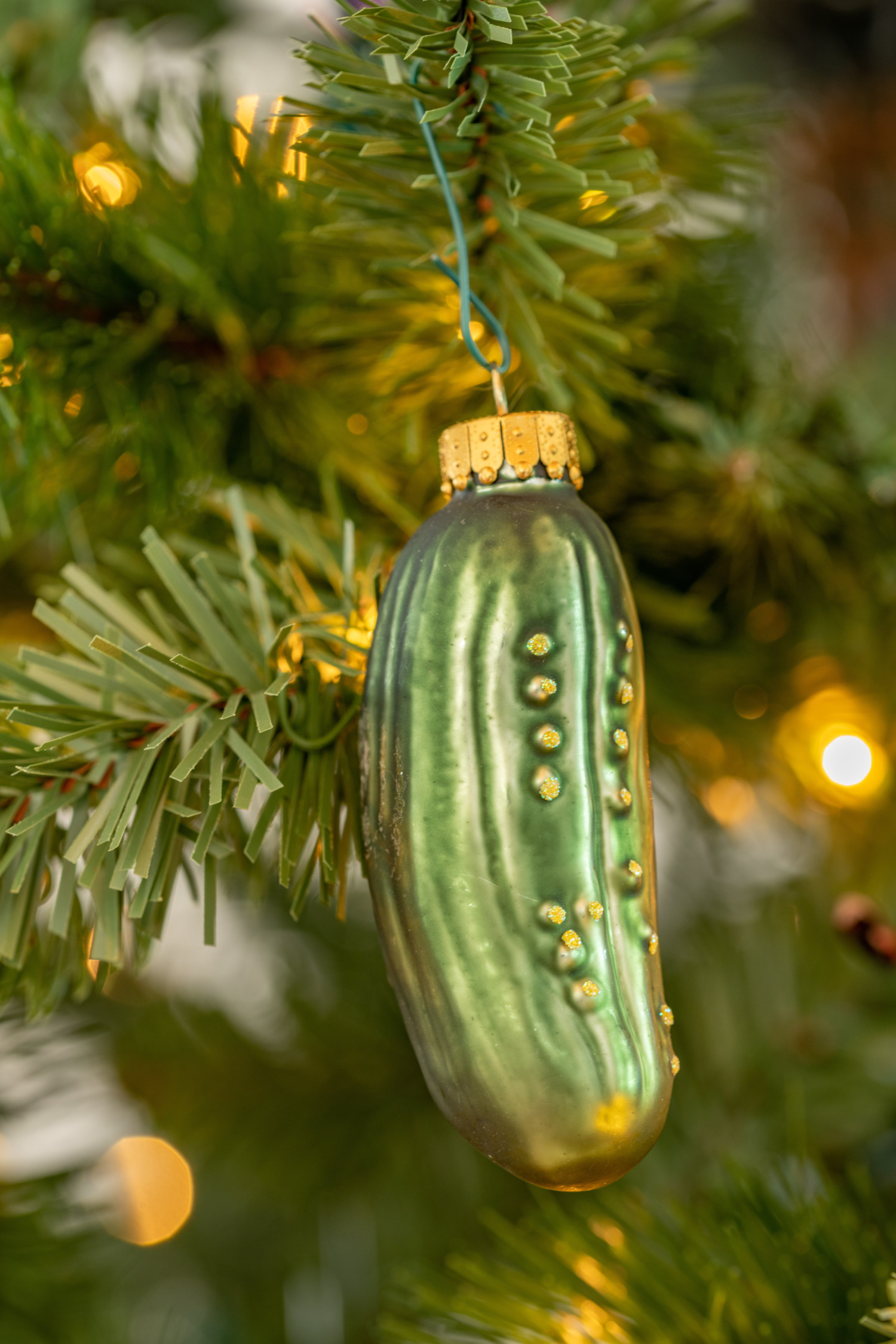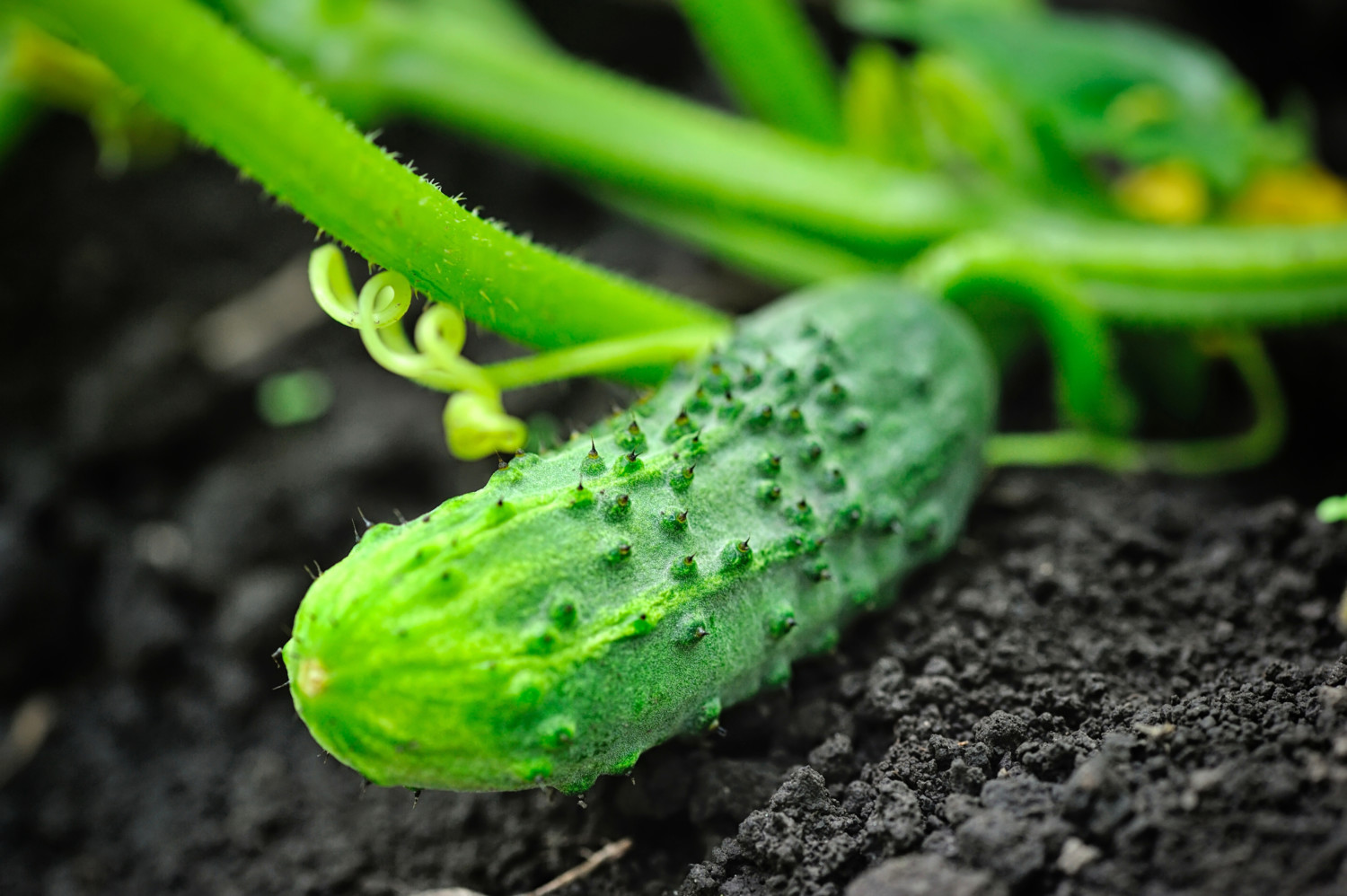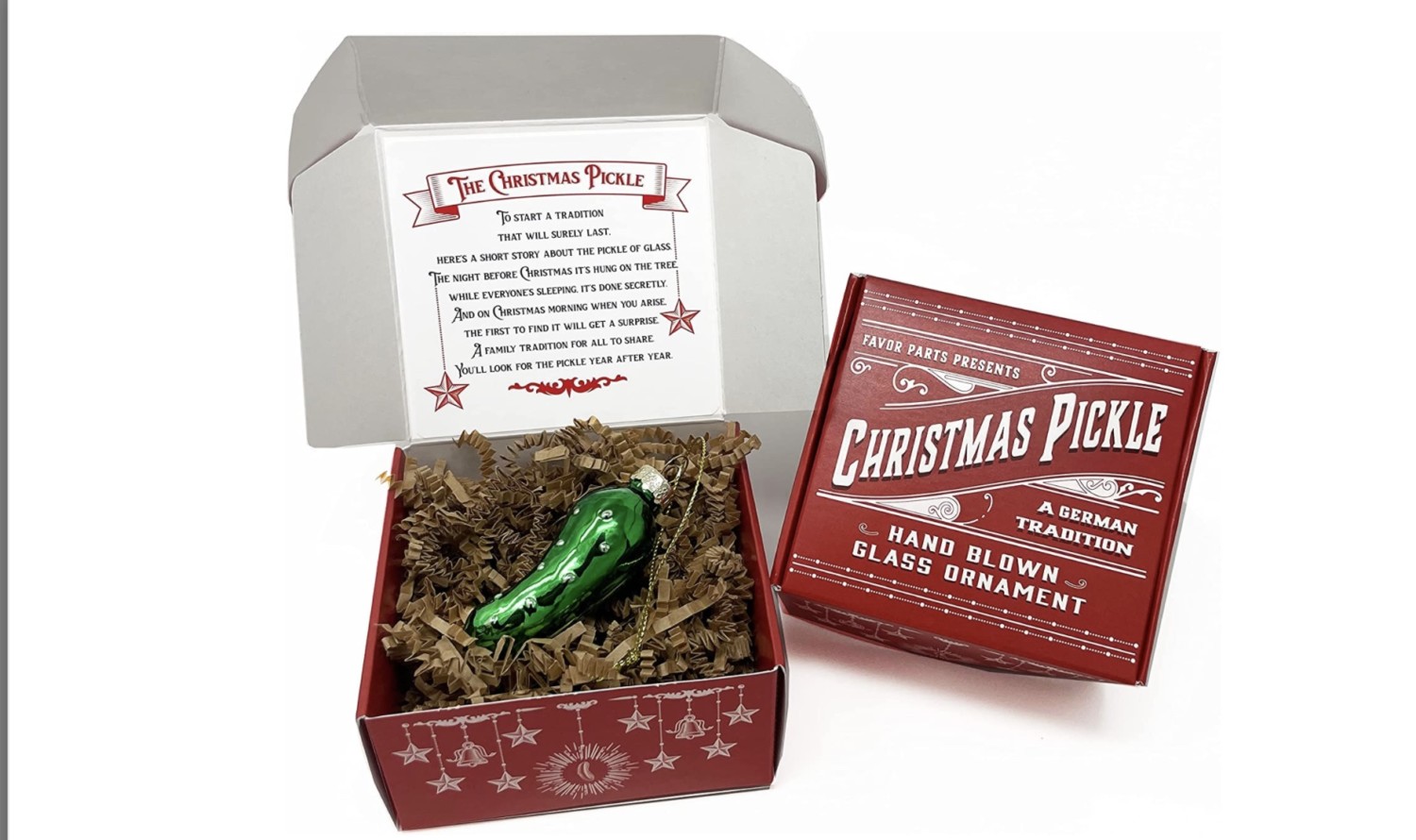The products and services mentioned below were selected independent of sales and advertising. However, Simplemost may receive a small commission from the purchase of any products or services through an affiliate link to the retailer's website.
If you’ve seen a pickle ornament among a Christmas tree’s decorations, you may have wondered how the puckery condiment got included along with the candy canes, snowmen and stars.
Well, pickle ornaments may or may not have a German origin story, depending on who you ask.
Where Did the Pickle Ornament Tradition Come From?
According to some, a pickle ornament hidden in the Tannenbaum is part of a Weihnachtsgurke (Christmas pickle) tradition dating back to the 1800s in Germany. It makes sense that the country that gave the world so many Christmas traditions would have a unique ornament tradition, too.
The lore surrounding this tradition says that a Christmas pickle ornament is hung among the branches last. Then, the first child to spot it on Christmas morning gets extra luck or a special gift.
However, a 2016 survey of people in Germany showed that most (91%) had never heard of the Christmas pickle ornament tradition.
A 2020 DW Euromaxx video report from Germany also backed up the lack of German knowledge about the pickle ornament custom.
“I fell for it when I saw an ornament in 2014 with the German tradition on it,” one commenter on the video wrote. “I’m happy to report that all the small kids in my family have enjoyed hunting for the pickle. We’ll keep it.”
Another commenter said that there really was a German origin for the pickle tradition, but that it was more regional to East Germany, with Prussian or Thuringia origins. The user said the practice died out in the 1900s, during a period of economic struggle between world wars, when families struggled to afford just a single gift for each child.
“But my grandpa practiced it in the ’50s with my mother and her brother,” the user Dr. Wahnsinn wrote.
Indeed, a German Wikipedia page displays a 1909 catalog for Christmas ornaments that features a pickle.
The Legend of the Christmas Pickle
There is also a legend of a Bavarian-born soldier taken prisoner in the state of Georgia during the Civil War, who supposedly survived his ordeal after a guard gave him a pickle to eat on Christmas Eve. John C. Lower then went and put one on his Christmas tree every year to mark its significance. But that seems a little far-fetched. As is the tale about two boys being trapped in a pickle barrel and being saved by St. Nicholas.

Because People Think They’re Traditional, Pickle Ornaments Are Becoming More Popular
But let’s take a step back for a second.
While you can buy glass pickle ornaments made in Germany today, it seems that production of the dill decorations began after glass manufacturers heard about the popularity of the pickle ornament custom in the U.S. and its supposed German origins.
“Sascha Müller of the Lauscha glass center, in the eastern German region where the making of glass Christmas ornaments started in the mid-19th century, said he had learned of the Christmas pickle for the first time in the 1990s, on a trip to Frankenmuth, Mich.,” a 2016 New York Times article reads.
In the DW video report above, fourth-generation German glassblower Michael Haberland of Lauscha said he also learned about the Christmas pickle ornament tradition in the U.S., during a trip to California. When he returned home, found an old mold of a gherkin that belonged to his grandfather, dating to the 1930s. He now uses it to make the pickle ornaments he sells today.
The making and selling of pickle ornaments in Germany appears to be on the rise. But it wasn’t necessarily the source of the custom in the first place.

A More Likely Pickle Ornament History
The German practice of decorating a tree at Christmas came to the U.S. with German settlers to Pennsylvania. Early decorations were mostly edible — they included cranberry strings, fruit, nuts, cookies and confections, according to “The Guide to United States Popular Culture” by Ray Broadus Browne and Pat Browne. Stores in the U.S. began selling Christmas ornaments by the 1870s, and glass ornaments started getting popular in the 1880s onwards after Woolworth started selling them.
Woolworth is sometimes cited as the source of the first pickle ornaments, with the allegation that the department store created a gimmick to sell decorative vegetables in the late 1800s. (And you can still buy a pickle ornament from Woolworth online for $5.99.)
“It is possible that pickles simply didn’t sell as well as other ornaments, on account of their color being roughly the same as that of an evergreen Christmas tree, and thus, hard to spot when hanging on a tree,” 10Best theorizes.
Pickle ornament popularity might also originate from the Michigan town of Berrien Springs, which had been dubbed “The Christmas Pickle Capital of the world,” thanks to its pickle festival. The area once hosted a number of pickle manufacturing plants, making it a perfect spot for this tradition to take hold. After a hiatus of 16 years, the city revived the July 4 festival in 2021.
The 2021 festival experienced a hiccup, though, when the main supplier didn’t show and pickles ended up in short supply. Participants improvised using cucumbers, which remain a major crop grown in the area.

Where You Can Get Your Own Pickle Ornament
If you’re looking for specific pickle ornaments to choose from, Country Living highlights a selection at the end of their article on the faux-German tradition. They’re easy to find online at sites like Amazon.com. You can get a traditional glass-blown green ornaments, ones with a Santa hat on top(which is a touch easier to find in a green tree), boxed ones perfect for gifting that feature the “origin story,” and ones with glitter all over them. You can even get them in bulk, if you like.
The hiding of the pickle ornament for a lucky person to find reminds us a little of the Spanish tradition of hiding a bean or other trinket in a Kings’ Cake for the feast of Epiphany in January. That tradition, though, can be traced directly back to Spain with no salespeople seemingly involved in its popularity.
No matter where the Christmas pickle ornament tradition came from, it’s a cute and unique decoration to hang from your tree if you’re feeling dilly.

Which Christmas pickle ornament legend do you believe?
This story originally appeared on Simplemost. Checkout Simplemost for additional stories.


